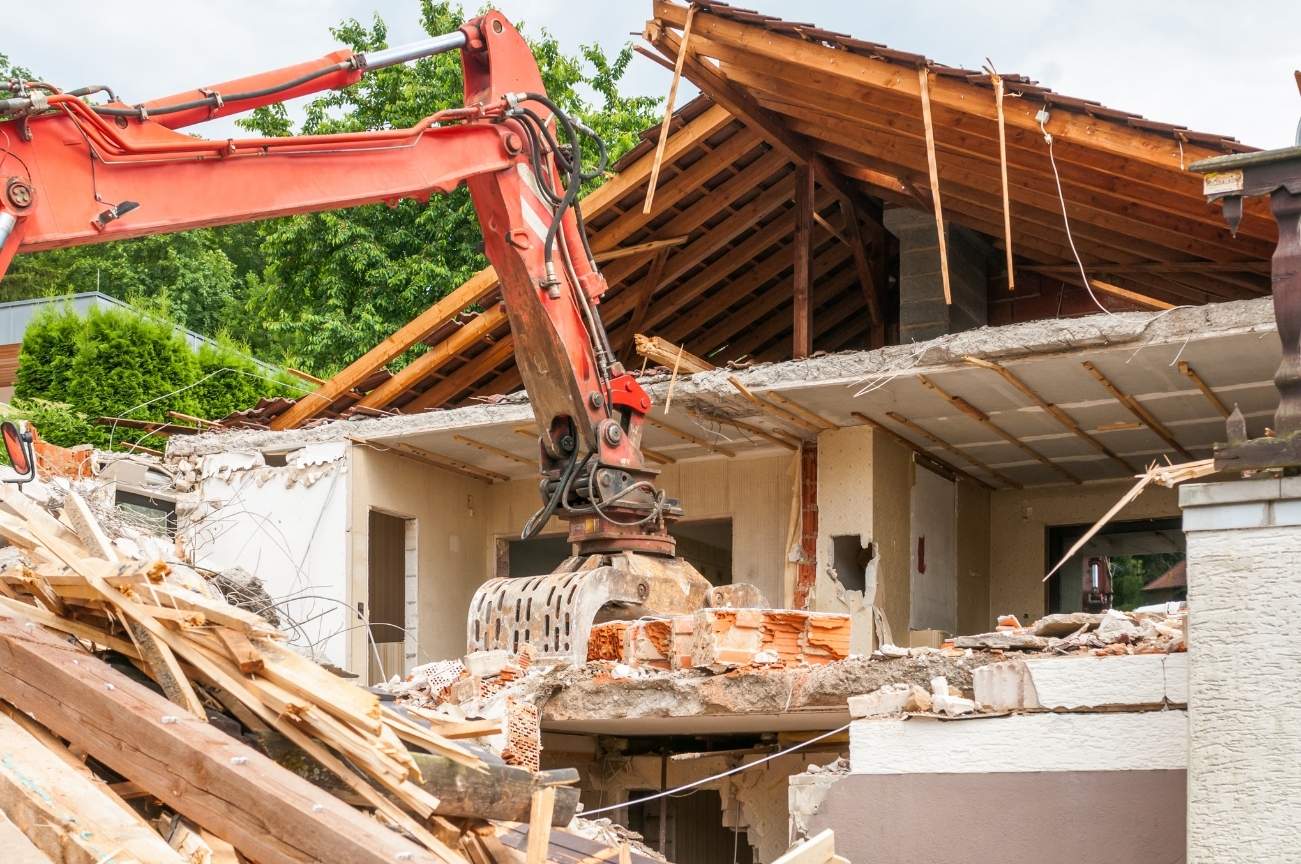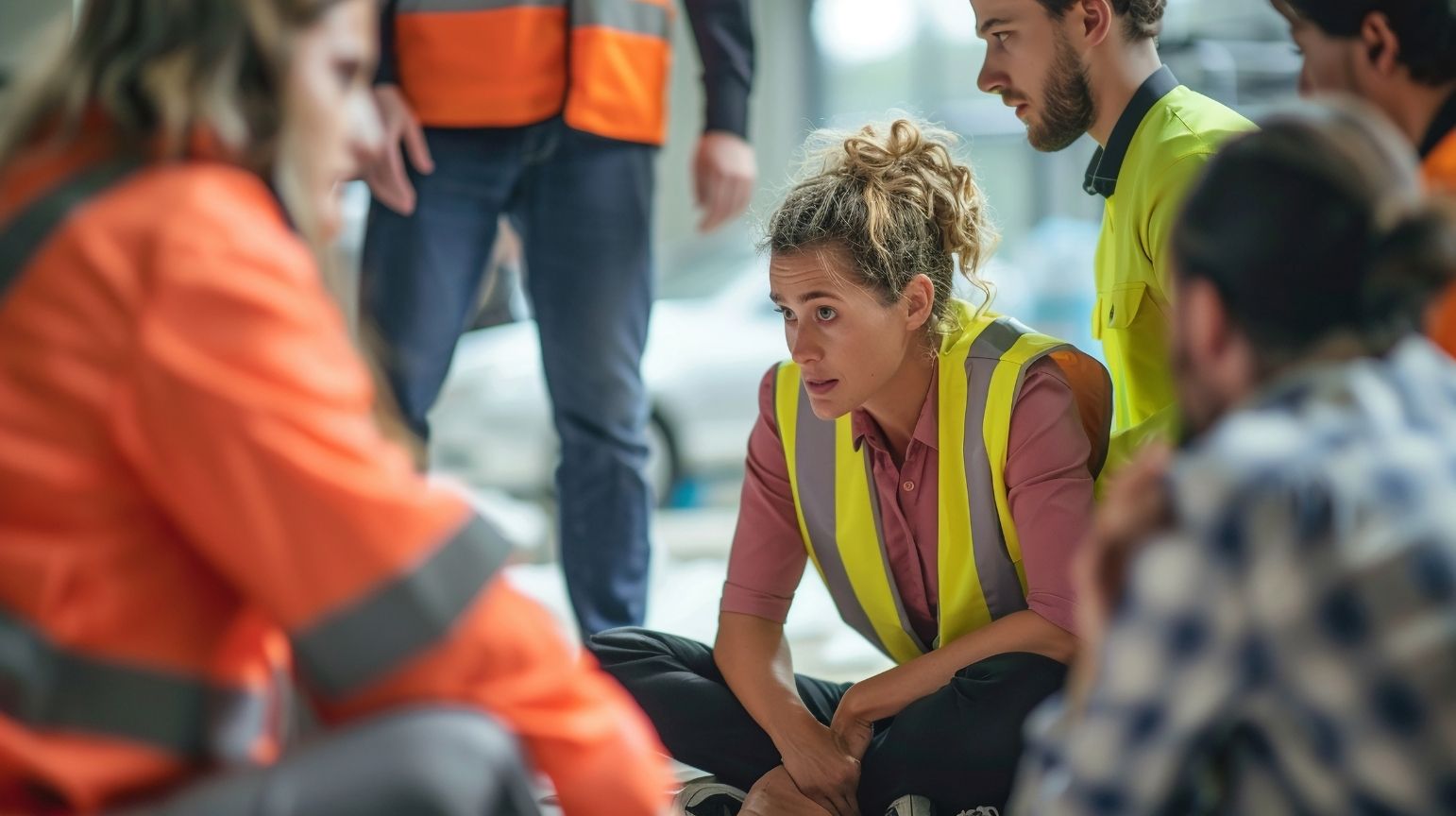When it comes to lease cleanup and demolition, having a game plan is crucial. Whether you’re managing a space that’s been leased out or preparing a site for new construction, the right strategies can make all the difference. This guide delivers 10 essential tips for successful lease clean up and demolition projects to ensure everything goes smoothly.
Introduction
Lease cleanup and demolition go hand in hand in property management. When tenants move out or when renovations are needed, a thorough cleanup is essential. This process not only prepares the space for new tenants but also ensures compliance with safety and environmental standards.
Effective demolition projects play a crucial role in revitalizing properties. They pave the way for new developments while addressing potential hazards, like structural issues or hazardous materials. Proper demolition can make transforming a space quicker and safer.
In this article, you’ll discover 10 essential tips that can make your lease cleanup and demolition projects successful. Each tip is designed to help you plan and execute your projects effectively while prioritizing safety and efficiency. Whether you’re a property manager or a contractor, these insights will guide you toward smoother operations and better results. Get ready to dive in and uncover strategies that will elevate your cleanup and demolition game!
1. Create a Comprehensive Plan
Creating a comprehensive plan is the backbone of your lease cleanup and demolition project. A well-defined strategy sets the tone for the entire process. Without a plan, you’re likely to face unexpected challenges that could derail your timelines and budget.
Key Elements of Your Plan
Timeline
First, establish a practical timeline. Consider all phases of the project, from initial assessments to final cleanup. Outline specific deadlines for each stage. This will help you track progress and stay on schedule.
Budget
Next, develop a detailed budget. Include costs for labor, materials, permits, and unexpected expenses. Be realistic about your financial limits. Keeping your budget in check prevents surprises later on.
Team Roles and Responsibilities
Finally, define team roles and responsibilities. Assign tasks based on each team member’s expertise. Clear expectations minimize confusion and promote efficiency. Make sure everyone knows their duties before the project begins.
Transitioning Between Phases
Transitioning from one phase to another can be tricky. To ensure a smooth handoff, hold regular team meetings. Check in on progress and address concerns. This keeps everyone aligned and aware of what’s next.
Flexibility is Key
Stay flexible. Even with the best planning, things may not go as expected. Be prepared to adapt your plan when necessary. This agility can save you time and resources.
By establishing a comprehensive plan with a clear timeline, budget, and defined roles, you’ll set your cleanup and demolition project up for success.
2. Perform a Thorough Site Assessment
Before diving into lease cleanup or demolition, conduct a thorough site assessment. This crucial step identifies potential issues that could complicate your project later on. Ignoring it may lead to delays and unexpected costs.
Why a Site Assessment is Necessary
A site assessment serves multiple purposes, including:
- Identifying Hazardous Materials: Detect harmful substances like asbestos or lead paint.
- Evaluating Structural Integrity: Assess existing buildings and their stability.
- Understanding Environmental Impact: Gauge how your project affects the surrounding ecosystem.
What to Cover in Your Assessment
When performing your assessment, focus on the following key areas:
Hazardous Materials
Inspect the premises for any harmful substances. Document every hazardous material you find. This information is essential for your safety plan and may influence your demolition methods.Structural Integrity
Check the condition of buildings and structures. Look for signs of wear or instability. If a structure is severely damaged, you may need to adjust your demolition approach to ensure safety.Environmental Impact
Assess how your project might affect the surroundings. This includes evaluating soil quality and local ecosystems. Understanding the environmental footprint of your actions is crucial for compliance with regulations.
Document Your Findings
Ensure you document every aspect of your assessment. Use the following methods to create a comprehensive record:
- Take detailed notes.
- Capture photographs of key areas.
- Create sketches if needed.
This documentation will serve as a reference throughout the project and help you communicate findings with your team.
Involve Professionals When Necessary
If your site contains hazardous materials or complex structural issues, consider involving professionals early on. Collaborating with environmental consultants can provide insights that ensure a safe and compliant approach.
3. Assemble the Right Team
Having the right team can transform your lease cleanup and demolition project. Skilled professionals bring expertise and efficiency, ensuring tasks are completed correctly and safely. Here’s how to assemble a winning team.
Importance of Skilled Professionals
Demolition and cleanup may look straightforward, but they require specialized knowledge. Without the right people, you risk delays, safety hazards, and increased costs. Plus, experts understand nuances like local regulations. Their experience can guide decisions that impact the entire project.
Key Areas of Expertise
When building your team, consider these areas of expertise:
Demolition Experts
Demolition specialists have the skills needed to safely tear down structures. They recognize the mechanics of buildings and know how to handle them. Look for professionals with experience in similar projects. Knowing local rules is also essential.
Environmental Specialists
Cleanup often involves hazardous materials. These can include asbestos, lead, or chemicals. Environmental specialists assess site contaminants and ensure safe removal. Their expertise helps protect workers and the surrounding area. They also assist with proper disposal methods, keeping your project compliant with regulations.
Cleanup Crews
Cleanup crews manage waste removal and site restoration. They speed up the process, ensuring nothing is overlooked. A well-trained crew knows how to organize and dispose of debris efficiently. This minimizes delays and keeps the site safe.
Building Your Team
Here’s how to source the right professionals:
- Research: Start by researching contractors with good reviews and proven track records.
- Interview: Conduct interviews to assess their experience and knowledge.
- Check Credentials: Verify licenses, certifications, and insurance coverage.
- Ask for References: Review past projects to ensure quality.
By assembling a skilled team, you lay the groundwork for a successful lease cleanup and demolition project. Their expertise will lead to a smooth, efficient process and help you navigate challenges along the way.
4. Ensure Compliance with Regulations
When tackling lease cleanup and demolition, compliance with regulations is non-negotiable. Various local, state, and federal laws affect how you handle these projects. Ignoring these regulations can lead to serious consequences, including hefty fines, project delays, and even legal action. Here’s what you need to know to ensure compliance throughout your project.
Understand Local Regulations
First, familiarize yourself with local regulations. These often govern zoning laws, waste disposal practices, and even noise restrictions during demolition. Each municipality may have its rules, so don’t assume they’re the same everywhere. Check with your local government’s website or consult a legal expert for guidance.
State and Federal Requirements
In addition to local laws, be aware of state and federal regulations. For instance, the EPA (Environmental Protection Agency) has strict rules for hazardous materials, such as asbestos and lead. If your project encounters these substances, you’ll need to follow specific handling and disposal procedures. Familiarize yourself with the Clean Air Act and other pertinent federal regulations to avoid violations.
Obtain Necessary Permits
Permits are often a must before starting your cleanup or demolition project. Identify which permits apply to your situation. They may include demolition permits, asbestos clearance certificates, and more. Failing to obtain the proper permits can halt your project and lead to costly fines.
Consequences of Non-Compliance
Non-compliance carries significant consequences. First, you could face fines from local or state agencies. Second, work may be stopped until compliance is achieved, delaying your project. Finally, failing to adhere to regulations can damage your reputation, making future work more challenging. Avoid these outcomes by prioritizing compliance from day one.
Stay Current
Regulations can change over time, so stay updated. Subscribe to newsletters or follow local government updates to keep informed. Regularly revisiting your compliance checklist ensures you meet all requirements.
In conclusion, compliance in lease cleanup and demolition is crucial. By understanding local, state, and federal regulations, obtaining the necessary permits, and keeping current with changes, you can avoid pitfalls and ensure a successful project.
5. Develop a Site Restoration List
A comprehensive site restoration list ensures that no critical details slip through the cracks. After demolition or cleanup, this list serves as your guide for what needs to be done before you can call the project complete. Here’s what to include in your checklist:
Key Items for Your Restoration List
1. Waste Removal
First and foremost, prioritize the removal of all debris from the site. Unattended waste can lead to safety hazards and environmental issues. Ensure you have a plan for disposing of different types of waste. Separate recyclable materials from general waste to promote sustainability.
2. Landscaping Requirements
Next, consider the landscape. If your project involves outdoor spaces, take note of landscaping requirements. This could include replanting trees, installing new sod, or adding shrubs and flowers. A well-maintained exterior enhances the aesthetics and adds value to the property.
3. Interior and Exterior Improvements
Don’t forget to address both interior and exterior enhancements. Inside, check for necessary cosmetic upgrades like painting, flooring, and lighting fixtures. Outside, inspect fences, walkways, and parking areas. Making these improvements can significantly enhance the property’s appeal.
4. Environmental Remediation
If your site has environmental concerns, include remediation measures in your restoration list. This may involve soil testing or removing contamination. Consulting with an environmental specialist can ensure you meet all necessary standards.
5. Final Inspection
Finally, plan for a thorough inspection. Before wrapping up, a final check ensures everything meets your expectations. It also gives you a chance to address any last-minute issues that might arise.
6. Prioritize Safety Protocols
Safety should always come first in lease cleanup and demolition projects. A secure work environment protects your team and ensures a successful operation. Here’s how to prioritize safety effectively.
Personal Protective Equipment (PPE)
First and foremost, equip your team with personal protective equipment. Proper gear minimizes the risk of injury. Essential items include:
- Hard hats to protect against head injuries
- Safety goggles to shield eyes from debris
- Gloves to prevent cuts and chemical exposure
- Steel-toed boots to protect feet
Make sure everyone understands how to use this gear properly. Regularly check the condition of PPE to ensure it functions correctly.
Emergency Procedures
Next, establish and clearly communicate emergency procedures. Accidents can happen. Be prepared by having a plan in place. Ensure your team knows:
- The location of first aid kits
- Contact information for emergency services
- Evacuation routes in case of fire or other hazards
Conduct regular drills to keep everyone familiar with these procedures. This practice not only builds confidence but also saves time if a real emergency arises.
Site Access Restrictions
Lastly, control site access to enhance safety. Limit entry to essential personnel only. Consider using barriers or signage to mark restricted areas. This approach helps to prevent accidents involving unauthorized individuals.
Additionally, establish a check-in/check-out system for workers. This method keeps track of who’s on site and ensures everyone’s safety. It is vital to monitor and manage the flow of people around the demolition site to minimize risks.
By implementing robust safety protocols, you create a culture of safety on your worksite. Remember, a safe site is a productive site. Prioritizing safety not only protects your team but also contributes to the overall success of your lease cleanup and demolition project.
7. Execute Efficient Waste Management
Waste management is crucial in lease cleanup and demolition projects. Proper disposal of materials not only ensures compliance but also promotes environmental responsibility. Here are a few strategies to manage waste effectively.
Separate Recyclable Materials
First, separate materials that can be recycled from those that cannot. This approach not only reduces landfill waste but also fosters a sustainable process. Common recyclables include:
- Metals
- Concrete
- Wood
- Certain plastics
Establish designated containers for each material type. Clearly label them to encourage team members to dispose of materials correctly. By doing this, you promote recycling while streamlining the cleanup process.
Handle Hazardous Waste Carefully
Waste management becomes more complicated when hazardous materials are involved. These materials can pose health risks if not handled properly. Examples of hazardous waste include:
- Asbestos
- Lead paint
- Chemicals
Before demolition begins, identify and assess any hazardous materials. Consult with environmental specialists to ensure compliance with local regulations. They can recommend safe disposal methods and help you secure necessary permits.
Find the Right Disposal Methods
Not all waste is the same, and finding the right disposal method is vital. For regular debris, local waste management services may suffice. However, for hazardous or specialized waste, you must work with licensed disposal companies. They are trained to handle these materials safely and legally.
Additionally, consider donating usable items. This could include furniture, fixtures, or appliances. Many organizations accept donations and will even pick them up from your site. Giving back can help those in need while reducing waste.
Keep Detailed Records
Lastly, maintain detailed records of your waste management efforts. This includes tracking what materials were disposed of, recycled, or donated. Proper documentation helps with compliance and serves as a useful reference for future projects.
By executing efficient waste management, you not only stay organized but also contribute positively to the environment. Adopting these practices can ease the cleanup phase and set a strong precedent for future projects.
Utilize Modern Equipment and Technology
In the world of lease clean-up and demolition, technology can mean the difference between chaos and efficiency. Using modern equipment not only speeds up the process but also enhances safety. Here’s how investing in the latest tools can transform your projects.
Benefits of Modern Machinery
Advanced machinery improves productivity while reducing manual labor risks. Consider the following advantages:
- Speed: Using hydraulic excavators, for example, allows you to demolish structures quickly and with precision.
- Access: This equipment can reach hard-to-access areas, ensuring thorough work.
- Dust Control: Dust control machines minimize airborne particles, protecting workers and surrounding environments.
Tech Innovations to Consider
When selecting tools, modern technologies make a significant impact. Here are some innovations to consider:
Drones:
Drones offer aerial views of the demolition site, helping to monitor progression and safety from above. This is especially useful for large sites or complex projects.3D Scanning:
This technology enables precise measurements of existing structures and identifies areas needing special attention, ensuring thorough preparation.Telematic Systems:
These systems track equipment performance and usage, assisting in maintenance and optimizing productivity on the job site.- Smart Safety Gear:
Helmets and vests equipped with sensors can alert workers to hazards, promoting real-time safety communication.
Improved Efficiency and Safety
Investing in modern equipment translates to fewer delays and accidents on site. Key points include:
- Built-in Safety Features: Advanced tools often incorporate safety features that prevent mishaps, crucial in demolition.
- Increased Capacity: Efficient machinery can handle larger volumes of work, leading to fewer trips to dispose of debris. This streamlines the process.
9. Schedule Regular Progress Check-ins
Regular check-ins keep your lease clean up and demolition project on track. Monitoring progress ensures that everything aligns with your original plan. Here’s how to conduct effective progress assessments.
Why Progress Check-ins Matter
Progress check-ins help you identify any potential issues early. They allow you to adjust timelines, catch quality issues, and manage the budget effectively. Regular assessments keep the project team accountable and ensure everyone stays focused on goals.
What to Assess During Check-ins
During each check-in, evaluate the following:
1. Timeline Adherence
Check whether your project is on schedule. Are tasks being completed as planned? If not, identify the causes. A delay in one area can cause a ripple effect, so address it immediately.
2. Quality of Work
Evaluate the quality of the work being done. Review construction standards and ensure compliance with safety regulations. Regular site inspections help maintain quality and safety.
3. Budget Status
Monitor your project’s financial health. Compare actual expenses to your budget. If you’re over budget, determine why and seek solutions. Regular financial assessments help prevent surprises at the end of the project.
Setting Check-in Frequency
Determine how often to conduct check-ins. Weekly meetings are a good pace for most projects. However, more complex projects might require daily updates. Establish a routine and stick with it to foster communication.
Tools to Aid Progress Monitoring
Utilizing project management tools can further streamline the check-in process. Consider using software that tracks timelines, budget statuses, and team responsibilities. Apps like Trello or Asana can improve visibility and collaboration.
10. Reflect and Learn Post-Project
Reflecting on your lease cleanup and demolition project is essential for continuous improvement. After the dust settles, take a moment to assess the entire process. This step helps identify what went well and what needs adjustment for future projects.
Conduct a Post-Project Review
Set aside time for a thorough review of the project. Gather your team to discuss outcomes, challenges, and successes. You might consider these questions:
- Did we meet our timeline?
- Were the budget estimates accurate?
- How effective was our safety protocol?
Engaging your team in this discussion opens the door to valuable insights. Every member’s perspective is unique and can reveal aspects you may overlook.
What Worked Well?
Highlight the strategies and methods that proved successful. Celebrate those wins. Recognizing effective practices reinforces positive behavior. It’s also an opportunity to standardize successful techniques for future projects.
Areas for Improvement
Just as recognizing successes is crucial, addressing areas needing improvement is equally important. Were there unforeseen challenges? Did the equipment perform as expected? Gather feedback from team members and stakeholders to pinpoint these areas.
Document and Adjust
Following your review, document your findings. Create a report outlining both successes and challenges. This will serve as a blueprint for future lease cleanups and demolition projects. Adjust your planning and procedures accordingly. This proactive approach leads to more efficient operations down the line.
Reflecting after the project allows you to grow and enhance future initiatives. By learning from your experiences, you build a stronger foundation for your next lease cleanup or demolition project. Embrace the chance to improve, and your future endeavors will benefit tremendously.
Conclusion
Successfully managing lease cleanup and demolition projects requires a mix of preparation, expertise, and continuous improvement. Each of the ten essential tips outlined in this guide plays a crucial role in enhancing outcomes and minimizing stress.
First, a comprehensive plan sets the stage for your project. It outlines timelines, budgets, and team responsibilities. Without this, projects can easily go off track. A thorough site assessment enables you to identify potential hazards and plan accordingly, providing a safer environment for your team.
Assembling the right team is another critical factor. Skilled professionals ensure that tasks are completed efficiently and safely. Compliance with regulations further protects your investment and reinforces safety standards. Ignoring these can lead to costly delays or legal issues.
Prioritizing safety protocols cannot be overstated. Personal protective equipment and clear emergency procedures create a safer workplace. Additionally, implementing efficient waste management practices not only preserves the environment but also saves time and resources.
Leveraging modern equipment and technology can enhance productivity and safety. Using advanced tools simplifies tasks and reduces manual labor. Regular progress check-ins allow for real-time adjustments, ensuring the project stays within scope, budget, and timeline.
Finally, reflecting on your project once it’s complete is invaluable. This step helps you identify what worked and what didn’t, equipping you with insights for future projects.
By adhering to these tips, you set yourself up for a smoother and more efficient lease cleanup and demolition process. Remember, planning and execution are key. Stay proactive, and your projects will thrive.







